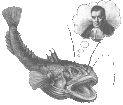UW Aquatic & Fishery Sciences Quantitative Seminar
Kevin See
NOAA Northwest Fisheries Science Center
Eliciting fish/habitat relationships for juvenile salmonids using machine learning models
Abstract
Better understanding of the relationships between juvenile salmonids and habitat characteristics is a crucial component of managing endangered populations by directing restoration actions. In particular, there is a strong interest in quantifying and utilizing these relationships to improve the status of numerous endangered and threatened steelhead and Chinook populations in the Northwest. Here, we present results from fitting machine learning models such as boosted regression trees and random forests to fish and habitat data collected at hundreds of sites in various watersheds throughout the Columbia basin by the Integrated and Effectiveness Monitoring Program and Columbia Habitat Monitoring Program. Many of the empirically derived fish-habitat relationships match biological expectations. Several examples are presented to describe how the results may be used for management purposes, including extrapolating from the 200-500 meter reach scale to the watershed scale.

